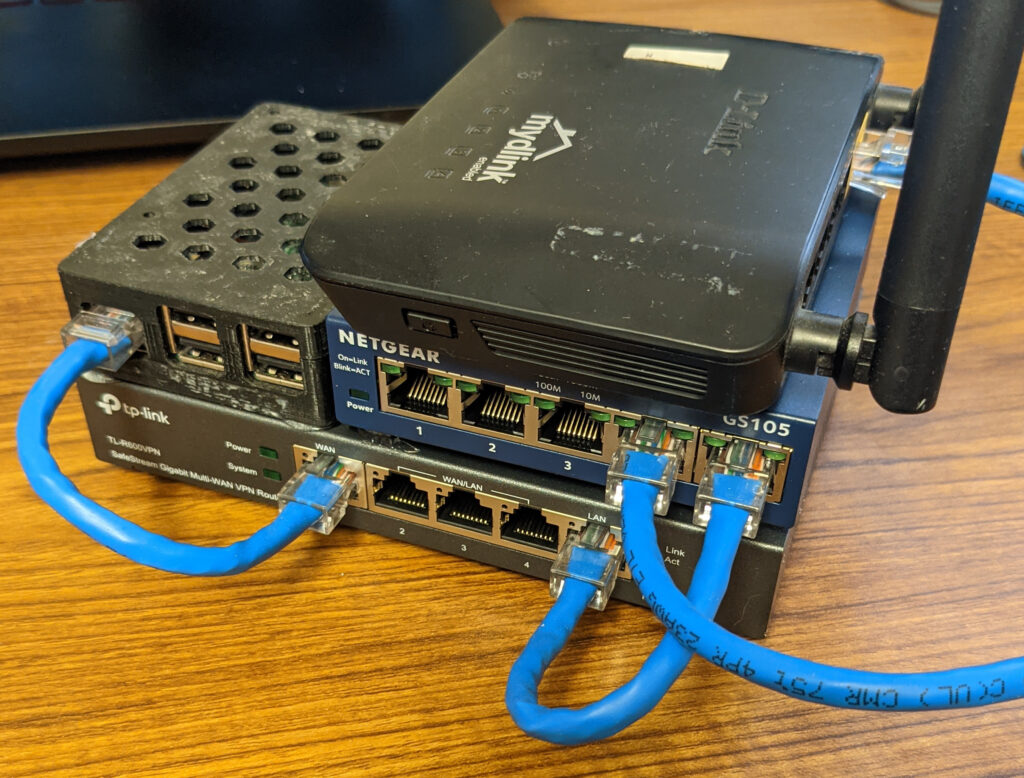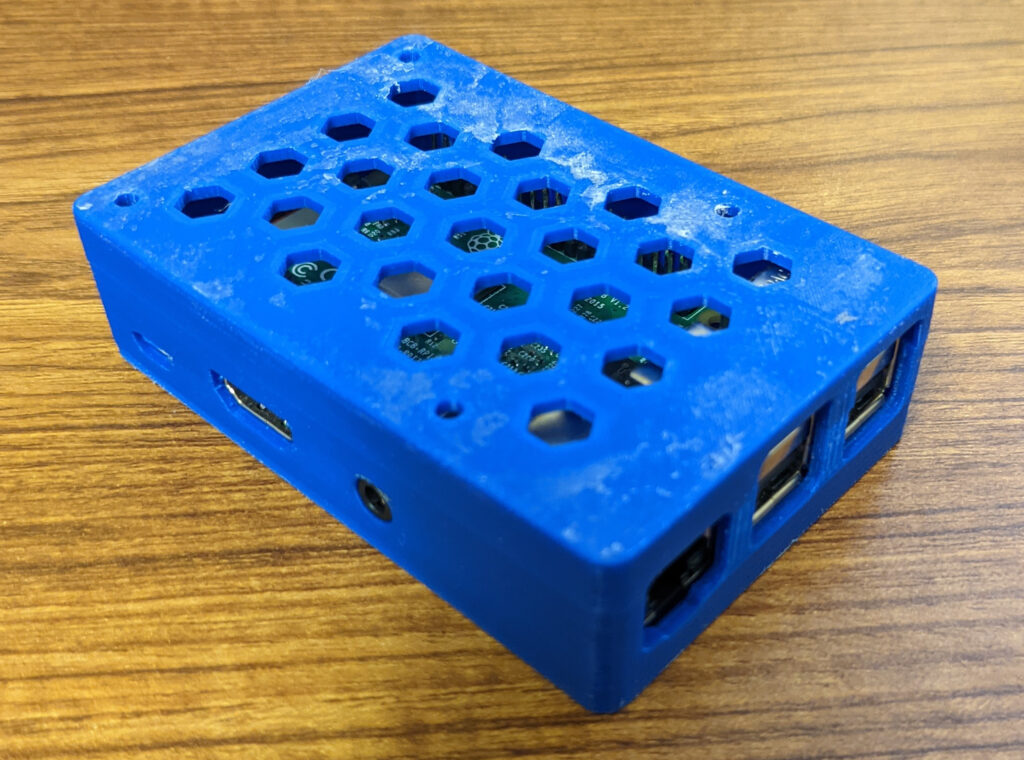Jerry-Rigging My Home Network (Hey, it Works)
Good Morning, Good Evening, and Good Night. As promised, here’s a detailed look at my home network. It’s not the most aesthetically pleasing setup, and there’s no rack mount, but it’s a system I’ve gradually pieced together over the past couple of years. While I have many additions and alterations planned for the future, this is how it stands for now.
The Network Layout#
So, here it is in all its glory—or rather, its mess. As you can see, it’s quite the tangle of cables and wires. Since I expect to modify and recreate the setup, I’ve left most of the wires at their original lengths, except for the Ethernet cables.
However, we will persevere through the chaos to see what I have going on.
 The basic layout of the network is relatively simple. My internet service is paid Wi-Fi rather than a modem connection. A Raspberry Pi 3 connects to the Wi-Fi service and feeds internet to the router, switch, and wireless access point.
The basic layout of the network is relatively simple. My internet service is paid Wi-Fi rather than a modem connection. A Raspberry Pi 3 connects to the Wi-Fi service and feeds internet to the router, switch, and wireless access point.
 Here’s a clearer view of the setup. I’ve stripped away the excess cabling and networked devices. The black box on the left connects to the Wi-Fi using its internal antenna, funneling data to the router at the bottom. The unmanaged switch (right middle) and wireless access point (right-top) act as continuations of the router, not as separate devices.
Here’s a clearer view of the setup. I’ve stripped away the excess cabling and networked devices. The black box on the left connects to the Wi-Fi using its internal antenna, funneling data to the router at the bottom. The unmanaged switch (right middle) and wireless access point (right-top) act as continuations of the router, not as separate devices.
 The Pi receives power from a USB hub. Originally, it was a regular 4-port USB 3.0 hub. But when I added a Pi for my NAS box (blue), the external hard drive (leftmost) needed more power than the Pi’s ports could deliver.
The Pi receives power from a USB hub. Originally, it was a regular 4-port USB 3.0 hub. But when I added a Pi for my NAS box (blue), the external hard drive (leftmost) needed more power than the Pi’s ports could deliver.
 The hub can now receive power from its power supply or its USB connection. I have both the power cable plugged into an outlet and the USB plugged into the NAS Pi. The hub powers both the Pis and the hard drive, but only the hard drive has a data connection to the NAS Pi.
The hub can now receive power from its power supply or its USB connection. I have both the power cable plugged into an outlet and the USB plugged into the NAS Pi. The hub powers both the Pis and the hard drive, but only the hard drive has a data connection to the NAS Pi.
Additional Devices#
Now that I’ve covered each part of the network, let’s go over a couple more devices. I have a tower I built a few years ago as a gaming computer that I’ve loaded with a level 1 hypervisor, Proxmox, to play around with various systems and configurations. One of the systems is PiHole, set up between the router and the DNS server. For those unfamiliar, PiHole is a DNS sinkhole that protects your devices from unwanted content without installing any client-side software. Most advertisements get blocked before reaching my devices.
And that’s it! That’s the current state of my jerry-rigged home network. There are other things I’m experimenting with, like Windows Server 2019, but this is my network setup for now. Check back for what else I’ve got going on.